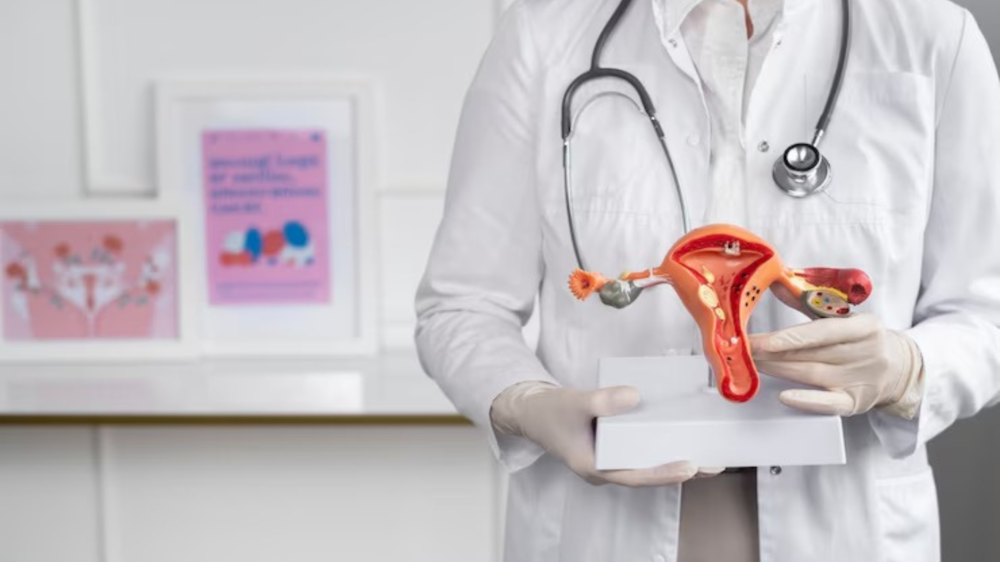In this article:
You will find it comforting to know that various treatment options are available to help manage adenomyosis. Understanding them will let you make informed decisions and feel more confident about conceiving. It is essential to receive the correct treatment before beginning your pregnancy journey.
What is Adenomyosis?
Adenomyosis is a condition that makes your uterine tissues grow into the muscular wall instead of the lining of the uterus. This can make your uterus larger and may cause symptoms such as:- Heavy menstrual bleeding
- Severe menstrual cramps
- Pain during intercourse
- Pelvic pressure or bloating
How Does Adenomyosis Affect Fertility?
You may be concerned about how adenomyosis can interfere with your plans to get pregnant. While some women with adenomyosis conceive naturally, others may face challenges.Adenomyosis may affect fertility in different ways for every woman.
- It may disrupt the implantation process in the uterus.
- It may cause inflammation that affects the uterine environment.
- The thickened uterine wall may make it harder for sperm to reach the egg.
Treatment Goals Before Pregnancy
Here are the most common treatment options to help manage adenomyosis before pregnancy.Medication Therapy
Hormonal Treatments
- Oral contraceptive pills
- Progesterone-only pills or injections
- GnRH agonists (which lower estrogen levels temporarily)
Non-Hormonal Options
Surgical Options
Conservative Surgery
Conservative surgery is usually recommended for women with focal adenomyosis, where the affected area is limited. If your adenomyosis is widespread (diffuse), surgery may not be possible or may carry higher risks.
Hysteroscopic Surgery
Non-Surgical, Uterus-Preserving Procedures
Uterine Artery Embolisation (UAE)
Some studies suggest it may affect the uterus in ways that make pregnancy riskier. Discuss all the aspects of this treatment with your doctor and understand them thoroughly.
High-Intensity Focused Ultrasound (HIFU)
Ask your doctor if this is a suitable option for you and whether it is performed in your area.
Fertility Treatments
Your doctor may recommend medical or surgical treatments to manage adenomyosis before IVF to improve the chances of embryo implantation.
Also, GnRH therapy for a few months before starting IVF may improve success rates in some women.
Making the Right Decision for You
The correct treatment for managing adenomyosis before pregnancy depends on many factors:- Your age
- Severity of symptoms
- Whether you have focal or diffuse adenomyosis
- When are you planning your pregnancy
- Your response to past treatments
Every woman’s experience with adenomyosis varies, and your care should be made to suit your needs.
Being diagnosed with adenomyosis when you are planning a pregnancy can feel overwhelming. Most women lead a healthy pregnancy after receiving the correct treatment and care.
Understanding your condition and discussing your options with your doctor is the first step. Managing adenomyosis before pregnancy gives you the best possible chance at a successful and healthy pregnancy, whether you begin with medication, explore surgical options, or consider fertility treatments.
FAQs on Treatment Options for Managing Adenomyosis Before Pregnancy
- Can I get pregnant naturally if I have adenomyosis?
Yes, it is possible to conceive naturally even with adenomyosis. However, your doctor may suggest additional treatments to improve your chances if you have been trying for several months without success. - Is surgery the only way to treat adenomyosis before pregnancy?
Most women find relief with medication or hormone therapy, so surgery is not always required. Your doctor may recommend surgery only if symptoms are severe or if other treatments have not worked. - How soon after treatment can I try to conceive?
It depends on your treatment method, whether it is medicines or surgery. You may get a clearance from your doctor to try again within a few weeks if you were prescribed medicines. However, you may have to wait almost three months to let your uterus heal before trying again in case of surgery.






